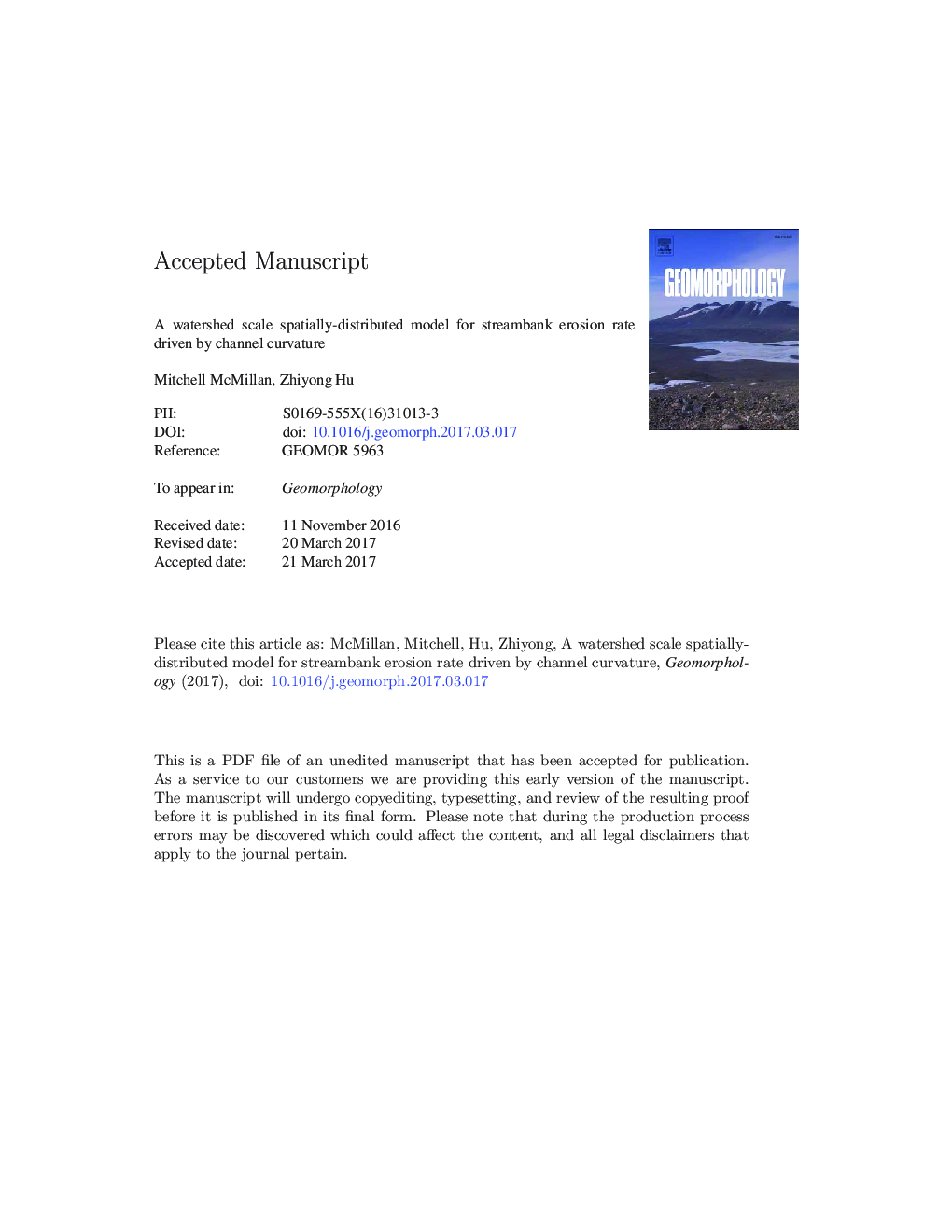| Article ID | Journal | Published Year | Pages | File Type |
|---|---|---|---|---|
| 5780716 | Geomorphology | 2017 | 61 Pages |
Abstract
Streambank erosion is a major source of fluvial sediment, but few large-scale, spatially distributed models exist to quantify streambank erosion rates. We introduce a spatially distributed model for streambank erosion applicable to sinuous, single-thread channels. We argue that such a model can adequately characterize streambank erosion rates, measured at the outsides of bends over a 2-year time period, throughout a large region. The model is based on the widely-used excess-velocity equation and comprised three components: a physics-based hydrodynamic model, a large-scale 1-dimensional model of average monthly discharge, and an empirical bank erodibility parameterization. The hydrodynamic submodel requires inputs of channel centerline, slope, width, depth, friction factor, and a scour factor A; the large-scale watershed submodel utilizes watershed-averaged monthly outputs of the Noah-2.8 land surface model; bank erodibility is based on tree cover and bank height as proxies for root density. The model was calibrated with erosion rates measured in sand-bed streams throughout the northern Gulf of Mexico coastal plain. The calibrated model outperforms a purely empirical model, as well as a model based only on excess velocity, illustrating the utility of combining a physics-based hydrodynamic model with an empirical bank erodibility relationship. The model could be improved by incorporating spatial variability in channel roughness and the hydrodynamic scour factor, which are here assumed constant. A reach-scale application of the model is illustrated on â¼1Â km of a medium-sized, mixed forest-pasture stream, where the model identifies streambank erosion hotspots on forested and non-forested bends.
Related Topics
Physical Sciences and Engineering
Earth and Planetary Sciences
Earth-Surface Processes
Authors
Mitchell McMillan, Zhiyong Hu,
